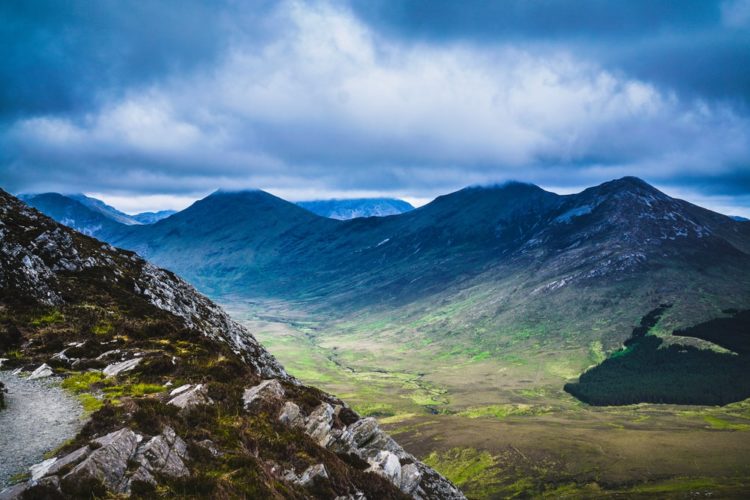Cal Hooper is a Chicago cop who was ditched by his wife, estranged from his daughter, haunted by past cases and addicted to the action. Somewhere along the way, the guiding line between right and wrong became fuzzy. Fed up, he turns in his badge and moves to a village in rural Ireland, where he buys a neglected cottage and, eventually and inevitably, gets dragged into a local and lethal mystery.
As Hooper is settling in — and before the primary mystery is launched — he takes a break from stripping wallpaper, pops a beer and sits on his back stoop, taking stock of where life has landed him. In a scene rich with description, this is an exemplary and delicious line from "The Searcher," by Irish author Tana French:
The mountains on the horizon look like someone took out a pocketknife and sliced neat curves out of the star-thick sky, leaving empty blackness.
Fiction, yes. But a hallmark of effective narrative journalism is to create a sense of place. Guide the reader into an unfamiliar geography or subculture and render it so authentically that even locals recognize it as true. I think of it as the word version of staging a play or a movie in a way that place becomes a primary character.
French writes what I think of as psychological thrillers. They are mostly police procedurals, based in Dublin, with lots of tension but not too many shoot-outs, and never unfolding in a rush. Her novels, which can suck you in like the peat bogs, instead rely on character and place.
That makes them worth studying for the narrative journalist. News is often devoid of those elements. But storytelling demands it.
French reveals her characters through biography, action and thought, but also dialog. One thing she does especially well is write each person's dialog as only they would speak. A lot of page-turner fiction, like a lot of screenplays and too much journalism, reads as if everyone speaks with the same pace and vocabulary. Watch any Aaron Sorkin movie. Much as I love his work, his characters mostly sound like they all went to the same Ivy League schools. The insert of a Southern or Boston accent doesn't mask the cheeky clip. A journalist with a good ear and, ideally, a digital recorder, will tune into the differences in speech patterns, and transfer them to the page. (Caveat: Be careful about using dialect or imperfect English that implies race or class or region that isn't appropriate to the story or fair to the story subject.)
Another key to creating a sense of place is just that. Put the reader where the story happens, especially if that place is central to events. COVID is a beast everywhere; but the backdrop is different in a tiny hospital in small-town USA than in a massive metro medical center. The refugee journey echoes through time and place; but a suspended life on the U.S.-Mexico border has different facets than that in a massive camp in Thailand. Painting the backdrop of a story doesn't need to take a lot of space. It just needs to be real to the story you're telling. Similarities to other places? Sure. Clichéd descriptions? No.
As Hooper looks out from his back stoop, at the folded mountains of Ireland, I can imagine other mountains that have that same cut-out feeling. In my mind's eye, I see a Jerry Schurr painting — but not one in the ragged high mountains of the Rockies or Cascades. These are lower, gentler — less imposing but more mysterious.
All that in a single, delicious sentence.



